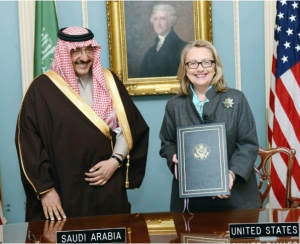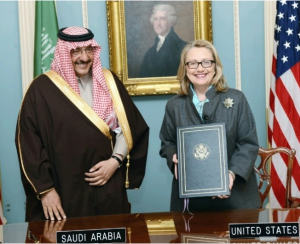Ray Davis as a Stand-In for the War between CIA, ISI, and State
In another installment of his book, Mark Mazzetti describes the Ray Davis episode as the signature (pun intended) event that turned Pakistan against the US. Certainly the Davis episode provides a nice hook for a description of the way the US-Pakistani relationship has declined, but it seems Mazzetti presents Davis as being an almost penultimate event of that decline (in this excerpt, he doesn’t get around to describing the 20-some Pakistani soldiers killed by NATO helicopters at the end of 2011).
In his first book excerpt, recall, Mazzetti described how the US killed Nek Muhammad in June 2004 as a quid pro quo with Pakistan for the authority to target al Qaeda figures within Pakistan.
But as Mazzetti explains in this excerpt, our drone strikes in Pakistan didn’t do much good: we didn’t get many high value targets, in part because some of them were seemingly tipped off.
Since the first C.I.A. drone strike in Pakistan in 2004, only a small number of militants on the C.I.A.’s list of “high-value targets” had been killed by drone strikes, and other potential strikes were scuttled at the last minute because of delays in getting Pakistani approval, or because the targets seemed to have been tipped off and had fled.
Then, in 2007, the CIA determined that al Qaeda had reconstituted in the tribal lands of Pakistan. So the CIA’s counterterrorism folks lobbied for escalating the drone war.
[A] highly classified C.I.A. internal memo, dated May 1, 2007, concluded that Al Qaeda was at its most dangerous since 2001 because of the base of operations that militants had established in the tribal areas. That assessment became the cornerstone of a yearlong discussion about the Pakistan problem. Some experts in the State Department warned that expanding the C.I.A. war in Pakistan would further stoke anti-American anger on the streets and could push the country into chaos. But officials inside the C.I.A.’s Counterterrorism Center argued for escalating the drone campaign without the I.S.I.’s blessing.
So after a year of debate, the CIA told General Kayani that they were going to operate unilaterally in Pakistan.
[I]n July 2008, when C.I.A. officers in Islamabad paid a visit to Gen. Ashfaq Parvez Kayani, the Pakistani Army chief, to tell him that President Bush had signed off on a set of secret orders authorizing a new strategy in the drone wars. No longer would the C.I.A. give Pakistan advance warning before launching missiles from Predator or Reaper drones in the tribal areas. From that point on, the C.I.A. officers told Kayani, the C.I.A.’s killing campaign in Pakistan would be a unilateral war.
Side note: Mazzetti’s original story described the initial drone strikes as an agreement between ISI and CIA. Here, Kayani plays a central role, though the rest of this installment affirms the later central role of Lt. Gen. Ahmad Shuja Pasha, the head of the ISI. I’m interested in whether we played Pakistan’s military off of ISI.
At this point of his story, Mazzetti only describes this as an escalation, followed by a declining relationship with CIA.
So, in July 2008, when the C.I.A.’s director, Michael Hayden, and his deputy, Stephen Kappes, came to the White House to present the agency’s plan to wage a unilateral war in the mountains of Pakistan, it wasn’t a hard sell to a frustrated president. That began the relentless, years-long drone assault on the tribal areas that President Obama continued when he took office. And as the C.I.A.’s relationship with the I.S.I. soured, Langley sent station chiefs out to Islamabad who spent far less time and energy building up good will with Pakistani spies than their predecessors had. From 2008 on, the agency cycled a succession of seasoned case officers through Islamabad, and each left Pakistan more embittered than the last. One of them had to leave the country in haste when his identity was revealed in the Pakistani press. The C.I.A. suspected the leak came from the I.S.I.
Many paragraphs in his story later, he describes signature strikes and the associated “military aged male” standard. Mazzetti doesn’t describe how the two developments both exacerbated the problem. In fact, according to Mazzetti’s NYT colleagues’ reporting from 2008, the decision to use signature strikes actually precedes this change by six months. And as Greg Miller laid out last year, the impetus for the change in both strategies came from “Roger,” the abrasive guy who took over the counterterrorism center in 2006. And Roger’s campaign to make these changes preceded the 2007 report that said al Qaeda was reconstituting itself in the tribal lands. Read more →


